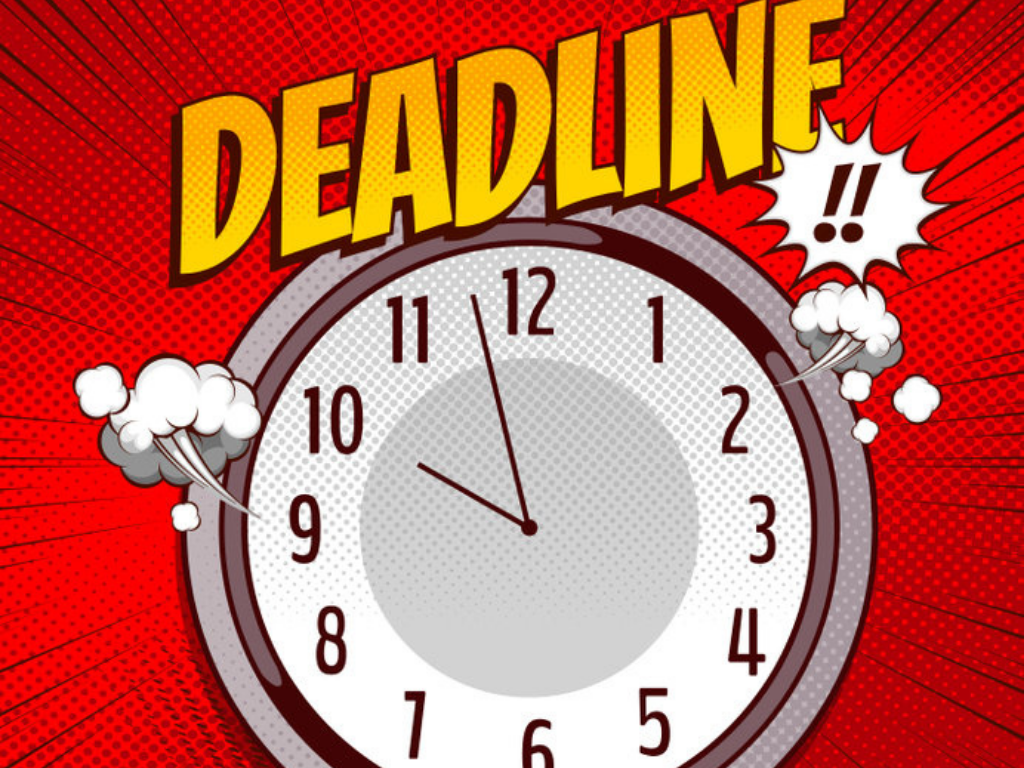Book Review: The Deadline Effect: How to Work Like it’s the Last Minute—Before the Last Minute by Christopher Cox
Like many copywriters, I have a “complicated” relationship with deadlines.
I hate them. They are the pain and terror of my life.
And I can’t live without them. Not having a deadline is even more painful and terrible than having one.
Is that familiar? It’s because it’s normal. When you have a deadline, you tend to avoid working on it until it’s right on top of you. Then you’re filled with a kind of panicked energy to get the work done. That’s good — that burst of energy is great. And bad — you sometimes set yourself up for failure: missing the deadline or doing less-than-your-best work because you didn’t have enough time.
Guilty as charged! You too, right?
When I see books or articles about successfully living with deadlines, I’m equally drawn and repelled: Maybe I’ll learn something useful! But maybe they’ll just make me feel worse about how dysfunctional I am about deadlines …
This book was different. It recognizes the strange reality: “The problem is that as soon as you set a deadline, work tends to get delayed until right before time expires. There’s a name for this phenomenon: it’s called the deadline effect.”
The deadline effect is also complicated by Hofstadter’s Law: “It always takes longer than you expect, even when you take into account Hofstadter’s Law.”
Here are the basic ways the book gives to thread the needle between the pain of deadlines and the undoubted energy they give us:
Create Checkpoints. Don’t make everything for a big project all come down to one massive deadline at the end. Set deadlines for intermediate steps. This can distribute deadline energy more evenly throughout the whole process.
Plan Right to Left. Remember, everything takes longer than you think it will. One way to set a deadline that won’t become unmeetable is to start with your final do-or-die deadline (the right side of your timeline), and work back from there, setting realistic non-optimistic deadlines.
Have a “Soft Open with Teeth.” Have a deadline that’s well ahead of the “real” deadline — but treat your “soft open” deadline just as seriously as the real one. (Sometimes it may help that most of the team doesn’t even know the deadline is “soft.”) As Cox says, this is a way of “gaining the virtues of the deadline effect (focus, urgency, cooperation) with none of the vices (rashness, desperation, incompleteness).”
Focus on Your Mission. For complex tasks, keep your eye on the prize, ignoring the distractions that always crop up along the way.
Revise, revise, revise. Keep your eyes open about what it is you’re trying to accomplish. Build in steps for improving things along the way.
The book is rich with real-life examples of groups that put these deadline tactics to work. Everything from Easter lily bulb growers that must get huge numbers of bulbs out there to bloom on the ever-moving date of Easter … to a robotics start-up.
You’ve heard the saying: Work expands to fill the time available for its completion. Cox asks, “What if we tried to escape this tyranny? What if we were so ready for anything, we could be relaxed about everything? Wouldn’t this state begin to look less like being on deadline and more like being at peace?”
It just might be possible!
PS: Meet those deadlines and do your best work ever by joining The Fundraisingology Lab by Moceanic. You’ll get the tools, the information, and the supporting community that will take you to new places in your fundraising career. Join the waiting list now and you’ll be the first to hear when the doors open again!
Related Blog Posts:










